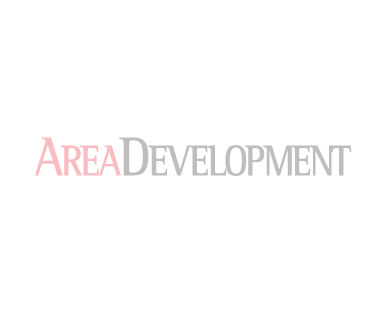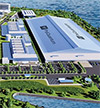“There’s a certain natural affinity to Texas for businesspeople because it’s viewed as a pro-business, low-tax, low-government-interference place for business,” says Bryan Daniel, the state’s executive director for Economic Development. “What we hear most often from relocating companies is that they are trying to get to places where the tax and regulatory structures are transparent, fair, and understandable,” Daniel says. “And, the availability of a skilled workforce that can go to work immediately is driving some of these decisions.”
Brandon Talbert, a director with Austin Consulting, says that viewpoint is accurate. “Texas has done a lot of things right, in terms of making it easy to do business from a regulatory standpoint. And they’ve invested in infrastructure; they’ve spent a lot of money on roads, both at the local and state level, which is really important for manufacturing projects,” Talbert says.
The state’s two largest cities, Dallas and Houston, “are still really hot markets, especially Dallas, which has a really diverse economy,” Talbert notes. The Dallas-Fort Worth metro area has more than 10,000 company headquarters, the largest concentration in the United States, the Dallas Business Journal reports. Also, Dallas is becoming recognized as an international city, Talbert points out: “The airports are huge assets for both Houston and Dallas.” Dallas-Fort Worth is one of the top-ranking inland ports in the United States, in part, because of the region’s growing demand for e-commerce and North Texas’ population growth, according to a CBRE report.
Suburban Growth
Rick Hughes, an executive vice president in the Dallas office of Cushman and Wakefield, says Dallas “has been the beneficiary of almost all (recent) non-manufacturing relocations“ to Texas, citing major expansions by Toyota, Liberty Mutual Insurance, and State Farm Insurance. But the most striking growth is taking place in the suburbs around Dallas. According to 2013 Census population estimates, two of the nation’s 15 fastest-growing cities of 50,000 or more are the northern Dallas suburbs of Frisco and McKinney. Other examples include Plano, Denton, Garland, Carrollton, Richardson, and Allen, all of which have grown by at least 20,000 people since 2000, many by much more than that, according to Forbes magazine. In the suburb of Plano, Toyota North America will begin occupying its new, 100-acre headquarters campus this summer. Its 2.1 million square feet of space could eventually house more than 6,000 employees, the company says.
One of the biggest, new growth engines in the region is the $1.5 billion CityLine project in Richardson. The 186-acre, mixed-use development includes office, retail, a hotel, and thousands of apartments. State Farm Insurance and Raytheon have more than 10,000 workers in the CityLine development. Developers project that 30,000 people will eventually be employed at CityLine, according to Dallasnews.com.
In recent years, DFW has become one of the nation’s top five data center locations. In terms of square footage for multi-tenant data centers, it ranks fourth, with 2.8 million square feet, according to 451 Research, a firm based in New York that analyzes information technology trends. Last November, Facebook announced its plans to triple the size of the data center complex it is building at AllianceTexas Business Park in north Fort Worth. The plan now calls for five buildings totaling nearly 2.5 million square feet of space, for an investment of more than $1 billion. The center will draw power from a 202-megawatt wind farm that the company is helping to build about 100 miles northwest of Fort Worth, as reported by The New York Times (4/26/16).
To win the project, Fort Worth and Tarrant County provided a total of $146.7 million in tax abatements for up to 20 years. During that time, the city, county, and an area school district will receive a total of $228.5 million in additional property taxes, according to the Fort Worth Chamber of Commerce. Cushman & Wakefield’s Hughes notes that the incentive packages the state negotiates with companies are based on three factors: quality of jobs (i.e., high paying), capital investment, and total investment (payroll plus infrastructure). The state’s lack of an income tax heightens the importance of property taxes as a source of state revenue, and therefore capital investment, he points out. “The state has recognized that modernization is a good thing.”
Abundant Land
Keith Dalton, president and CEO of KDW, Ltd., a Houston-based design-build firm, says one of the sprawling city’s major assets is abundant land for development. “When clients are developing other projects either around the country or internationally, one of their biggest complaints is not enough land to expand in years to come, or it is too expensive. But (industrial) land prices in Houston are good, and there are virtually no entitlements that would present a barrier to development.”
In addition to Houston, the availability of land for development is still very good even in Dallas. “From a national perspective, those two markets (Houston and Dallas) are still pretty cost-competitive, if not a little below what you would see in markets of comparable size on the East Coast and in the Southeast,” Austin Consulting’s Talbert says.
“From a manufacturing perspective, Houston is on fire,” Dalton notes, citing growth in categories including light assembly, food processing, and heavy machining. “Costs are relatively low here compared to other locations around the country, and there is a large, available work force with a good work ethic.”
There’s a certain natural affinity to Texas for businesspeople because it’s viewed as a pro-business, low-tax, low-government-interference place for business. Bryan Daniel, state executive director, Texas Economic Development The Houston metro area also has its own growing suburbs, like Katy, Texas, located on Interstate 10, 20 miles west of Houston. Katy is part of the Texas Energy Corridor, home to many of the world’s major energy companies and a number of related industry clusters. There’s room for new energy companies, also. In February, Japan-based Toshiba Mitsubishi-Electric Industrial Systems Corp., a Japanese maker of solar power inverters, broke ground for a $6 million plant in Katy.
High Rate of In-Migration
Rapid growth can bring some challenges, such as labor shortages and rising land prices. “But Texas is one of the fastest-growing states in the country, with an influx of people relocating from other states and other countries,” Talbert says. A healthy percentage of those new residents are college graduates attracted by the career possibilities, he adds.
Hughes says the presence of some of the top universities in the country has paid dividends in the form of a highly educated workforce in and around the large metro areas of Dallas, Houston, Austin, and, increasingly, San Antonio. Competition for skilled workers is intense, but Texas has another advantage, Hughes points out: a high rate of in-migration, with 350 to 375 people, on average, moving to Texas every day. “The state has created tens of thousands of jobs in the last 24 months, but we have been able to meet the job growth through in-migration.”
New Facility and Expansion Projects Across Texas
Automotive and aerospace/defense manufacturers, financial services firms, e-commerce fulfillment centers, and many other businesses across various industrial sectors are finding success in Texas.
-
Toyota North America
Plano, TXToyota North America will begin occupying its new, 100-acre headquarters campus in Plano this summer. Its 2.1 million square feet of space could eventually house more than 6,000 employees.
-
CityLine project
Richardson, TXThe $1.5 billion, 186-acre, CityLine project is a mixed-use development that includes office, retail, a hotel, and thousands of apartments. State Farm Insurance and Raytheon have more than 10,000 workers in the CityLine development.
-
Facebook
Fort Worth, TXFacebook plans to triple the size of the data center complex it is building at AllianceTexas Business Park in north Fort Worth. The plan calls for five buildings totaling nearly 2.5 million square feet of space, for an investment of more than $1 billion.
-
Toshiba Mitsubishi-Electric Industrial Systems Corp
Katy, TXIn February, Japan-based Toshiba Mitsubishi-Electric Industrial Systems Corp., a Japanese maker of solar power inverters, broke ground for a $6 million plant in Katy.
-
HOLT CAT
San Antonio, TXConstruction equipment manufacturer HOLT CAT is building a $20 million, 85,000-square-foot headquarters facility in San Antonio, slated for completion in October.
-
Amazon
San Marcos, TXLast August, Amazon opened a new, 855,000-square-foot fulfillment center in San Marcos, which the company expects will eventually employ as many as 1,000 workers.
-
SpaceX
Brownsville, TXElon Musk’s SpaceX’s commercial rocket launch facility in the Brownsville area is expected to create 300 jobs and add $85 million in capital investment.
Speaking of Austin, another fastest-growing region is the Austin-San Antonio Innovation Corridor along Interstate 35. The Texas Water Development Board has projected the population of the Austin-San Antonio corridor, made up of 13 counties, will swell from 4.27 million in 2014 to 5.71 million in 2030.
One of San Antonio’s long-time employers, construction equipment manufacturer HOLT CAT, is building a new, $20 million headquarters facility, slated for completion in October. City officials hope the 85,000-square- foot headquarters will serve as a catalyst for more development on the city’s east side.
The San Marcos area, which is on the I-35 corridor, has added more than 2,700 new jobs since 2010, with $250 million in new capital investment. Last August, Amazon opened a new, 855,000-square-foot fulfillment center in San Marcos, which the company expects will eventually employ as many as 1,000 workers. Under the terms of an employment-based incentive agreement, the city will refund to the company 85 percent of its ad valorem taxes on personal property and 40 percent of ad valorem taxes on real property for 10 years. The city will also rebate a sliding scale of sales taxes realized by the city over the first 20 years of the project.
Texas has done a lot of things right, in terms of making it easy to do business from a regulatory standpoint. And they’ve invested in infrastructure; they’ve spent a lot of money on roads, both at the local and state level, which is really important for manufacturing projects. Brandon Talbert, director, Austin Consulting Meanwhile, a new-frontier industry cluster has been growing in South Texas. In August 2014, the state offered $2.3 million from the Texas Enterprise Fund to bring Elon Musk’s SpaceX’s commercial rocket launch facility to the Brownsville area. The nation’s first commercial rocket launch facility is expected to create 300 jobs and add $85 million in capital investment, according to the Governor’s office. Elsewhere in the region, one of the world’s largest helicopter repair facilities resides in Corpus Christi, while the cities of Waco, Amarillo, El Paso, Wichita Falls, McAllen, and Harlingen all have aerospace manufacturing facilities.
Addressing Challenges
Of course, Texas’ proximity to Mexico is among the reasons more projects look to expand in Texas. But, as Hughes points out, “We’ll see how everything plays out with NAFTA; a potential tariff could potentially help or hurt Texas” — and other states as well.
Another major challenge facing states hoping to maintain strong economic growth is providing enough workers for increasingly tech-driven industries. Texas’ Skills Development Fund provides customized training for companies and workers to increase skill levels and wages. Grants are provided to help a business, consortium of businesses, or trade union form partnerships with colleges to provide custom job training. The Skills Development Fund pays for the training, the college administers the grant, and businesses create new jobs and improve the skills of their current workers.
In addition, the Texas Workforce Commission has dedicated $1 million to support collaborations between Workforce Development Boards and economic development corporations (EDCs) to provide high-demand occupational job training in local workforce areas. Funds will be available through September 30, 2017.
Along with helping established companies with deal-closing issues like taxes or workforce training, the state is also putting more emphasis on helping small businesses and entrepreneurs, Daniel explains: “Helping those folks can pay big dividends.”
Texas Enterprise Fund
The Texas Enterprise Fund (TEF) is one of the largest “deal-closing” funds of its kind in the nation. The fund is used as a final incentive tool to help strengthen the state’s economy by attracting projects that offer significant projected job creation and capital investment, and where a single Texas site is competing with another viable out-of-state option.
There are several primary measures that every TEF project must meet in order to be considered for an award, and every award dollar amount is determined using an analytical model applied uniformly to each TEF applicant. Variations in award amounts are influenced by the number of jobs to be created, the expected timeframe for hiring, and the average wages to be paid.
Since the program’s inception in 2004, the Texas Enterprise Fund has awarded more than $595 million to create approximately 83,000 jobs.
Texas Enterprise Zone Program
The Texas Enterprise Zone Program (EZP) is an economic development tool for local communities to partner with the state of Texas to promote job creation and significant private investment that will assist economically distressed areas of the state.
Approved projects are eligible to apply for state sales and use tax refunds on qualified expenditures. The level and amount of refund is related to the capital investment and jobs created at the qualified business site. The refund for each designation can be an amount ranging from a minimum of $2,500 per job for projects creating at least 10 net new jobs, to a maximum of $7,500 per job for projects creating at least 500 net new jobs.
 It’s no secret that everything is bigger in Texas, and the same is true of our economy. If Texas were a nation, it would be the 10th-largest economy in the world. Texas is a national leader in job creation, with more than two million private-sector jobs added over the last decade, and has been the nation’s top exporter for 14 years running.
It’s no secret that everything is bigger in Texas, and the same is true of our economy. If Texas were a nation, it would be the 10th-largest economy in the world. Texas is a national leader in job creation, with more than two million private-sector jobs added over the last decade, and has been the nation’s top exporter for 14 years running.


